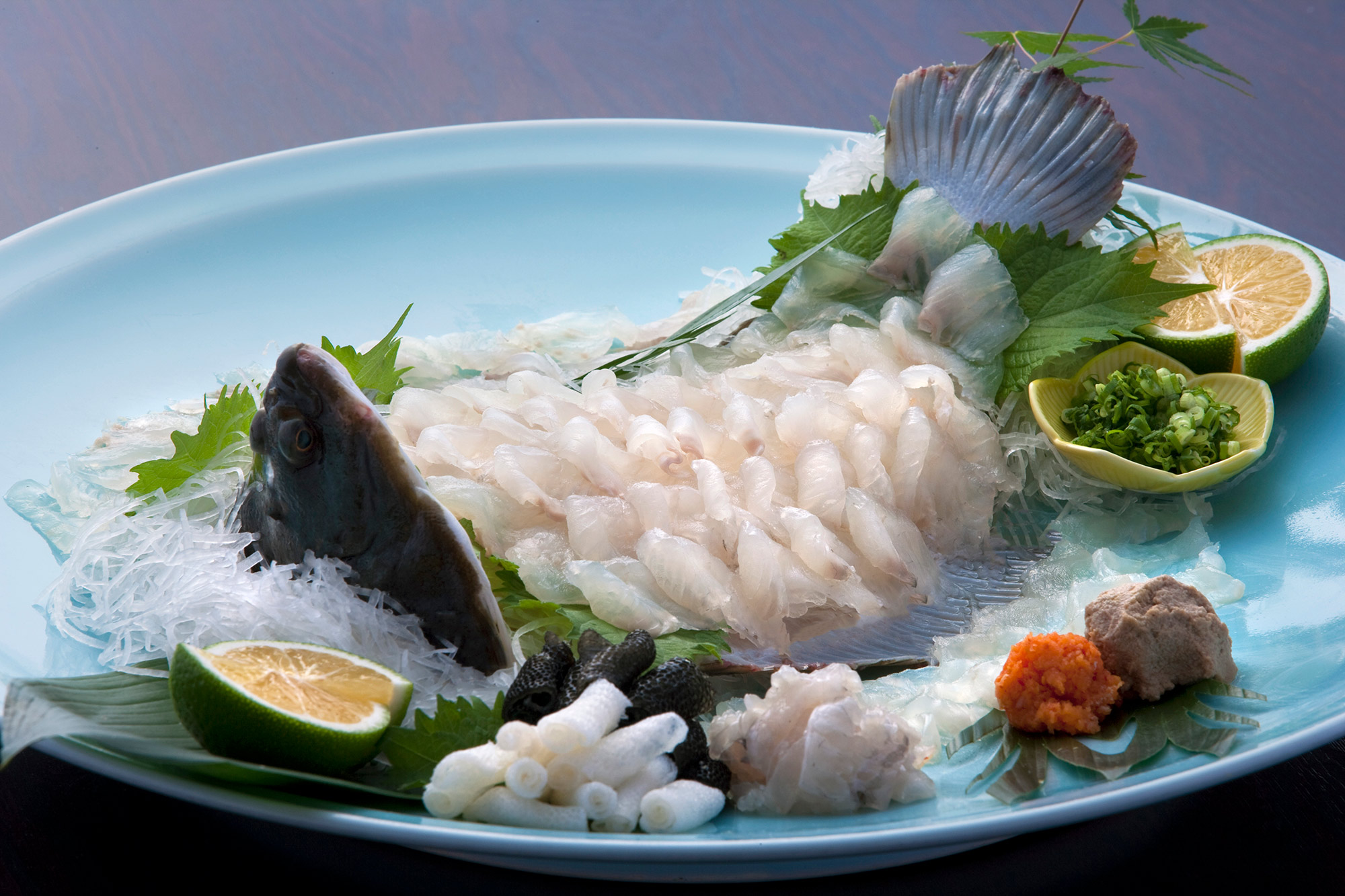

- Kitsuki & Hiji
- Foods
Shiroshita Karei (Flounder)
Photography/TAKEUCHI Yasunori
Spring Water Creating Flavor
Beneath the seaside stonewall of Youkoku Castle in Hiji is a park where there stands a monument to Kyoushi Takahama that reads, “Spring water welling within the sea raise fish.” Clear waters spring forth from the bottom of the ocean nearly three meters deep, within the sea about 30 meters from the coast, and help to raise the famous Shiroshita Karei (“Under the Castle Flounder”).
While water is said to spring up in other locations as well, this spring water dilutes the salt of the seawater, helping generate abundant seaweed and plankton in its brackish water, bringing in a tiny shrimp known as Metapenaeus moyebi, on which the distinctive and meaty flounder feeds.
While it is a marbled flounder, its body is distinctive. It’s round with a small head and a tail fin that doesn’t fan out, and doesn’t have a muddy flavor. When made into sashimi, it is pure white and glossy with good texture. Its flavor has been known since antiquity and was given as tribute to the Shogunate from the Kinoshita family, lord of Hiji during the Edo Period, and was difficult even for samurai to obtain, let alone commoners.
Where does the spring water come from? It is thought to come from the Kanagoe Mountains stretching behind Hiji. This range of fault scarp gushes with clean waters such as Yamada Springs, which flow from small rivers such as Kanaida River, Miya River, and Tomoyasu River into Beppu Bay. Perhaps this groundwater shows up in the sea beneath Youkoku Castle.
Perhaps the best way to eat it is as sashimi or arai (cut into thin pieces and chilled in ice). Slice it thin, boil and mash the liver, then add seasonings, kabosu (a kind of citrus fruit), and soy sauce. Small ones can be lightly seasoned and simmered. Nowadays, ordinary people can enjoy Shiroshita Karei as well, and it is in season in the summertime. There is even a Shiroshita Karei festival held in May.
Incidentally, the castle is named after a valley where the sun rises in the Chinese classics, since the name Hiji also means “rising sun.” Built by the Kinoshita clan, these castle ruins offer a spectacular view of the sea overlooking Beppu Bay. The poem at the beginning was one of the eight poems composed at a poetry contest beneath the castle when Kyoushi Takahama visited in the summer of 1920. The monument was erected in 1952.

The stone wall at Youkaku Castle.

